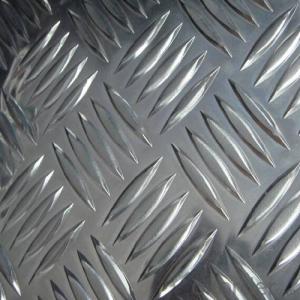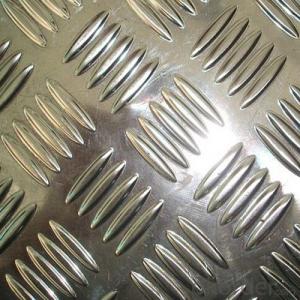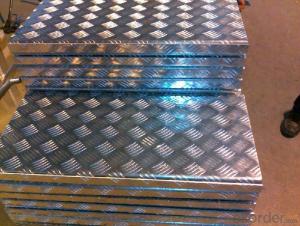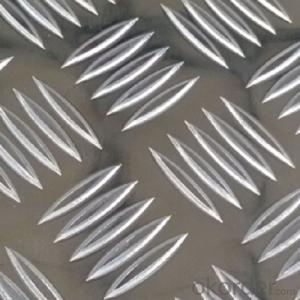Aluminum Checker Plate Sheet
Aluminum Checker Plate Sheet Related Searches
Led Light Bulbs For Ceiling Fixtures Led Lamps For Ceiling 42 In Ceiling Fan With Light Aluminum Coil Stock For Gutters Aluminum Foil For The Grill Hole Saw For Aluminum Plate Aluminum Tread Plate For Trailer Bow Plate For Aluminum Boat Aluminum Foil For Grow Room Aluminum Foil For Joint PainHot Searches
Stock Price For Aluminum Aluminum Coil Stock For Sale Aluminum Gutter Coil For Sale Used Aluminum Scaffolding For Sale 1/4 Aluminum Plate For Sale Aluminum Bar Stock For Sale Aluminum Round Stock For Sale Aluminum Diamond Plate For Sale Aluminum Scaffolding For Sale Craigslist 6061 Aluminum Plate For Sale Aluminum Dock Plate For Sale 7075 Aluminum Plate For Sale Aluminum Tread Plate For Sale Aluminum Checker Plate For Sale Aluminum Plate For Sale Near Me Plate Aluminum For Sale Aluminum Plate For Sale Aluminum Square Stock For Sale Aluminum Flat Stock For Sale Billet Aluminum Stock For SaleAluminum Checker Plate Sheet Supplier & Manufacturer from China
Okorder.com is a professional Aluminum Checker Plate Sheet supplier & manufacturer, offers integrated one-stop services including real-time quoting and online cargo tracking. We are funded by CNBM Group, a Fortune 500 enterprise and the largest Aluminum Checker Plate Sheet firm in China.Hot Products
FAQ
- Aluminum sheets can typically be purchased in both small quantities and in bulk. While it may depend on the specific supplier or retailer, many offer aluminum sheets in various sizes and quantities to meet the diverse needs of customers. Whether you require a few sheets for a small project or a larger quantity for industrial purposes, it is worth exploring different suppliers to find the option that best suits your requirements.
- To effectively eliminate stains or marks on aluminum sheets, the following steps can be followed: 1. Begin by preparing a mixture of warm water and mild dish soap in a bucket or basin. 2. Immerse a soft cloth or sponge into the soapy water and gently scrub the affected area. It is important to avoid the use of abrasive materials or harsh chemicals that may cause scratches or damage to the aluminum surface. 3. In case of more stubborn stains, a paste can be created by combining baking soda with water. Apply the paste onto the stained area and allow it to sit for a few minutes before softly scrubbing it with a cloth or sponge. 4. If the stains persist, consider utilizing a non-abrasive cleaner specifically designed for aluminum surfaces. Adhere to the instructions provided by the manufacturer on the packaging for optimal outcomes. 5. Thoroughly rinse the aluminum sheet with clean water to eliminate any remnants of soap. 6. For particularly stubborn stains or marks that prove to be difficult to remove, white vinegar or lemon juice can be employed. Apply a small amount of vinegar or lemon juice onto a cloth or sponge and gently rub the stained area. Rinse the aluminum sheet thoroughly after utilizing these acidic solutions. 7. After the cleaning process, it is crucial to completely dry the aluminum sheet to prevent the formation of water spots or streaks. This can be achieved by using a clean towel or allowing the sheet to air dry. Always remember to test any cleaning solution or method on a small, inconspicuous area of the aluminum sheet before applying it to the entire surface. This will help ensure that no damage or discoloration occurs.
- The thickness tolerances of aluminum sheets can vary based on the grade and application. Normally, the standard tolerances range from +/- 0.006 inches to +/- 0.015 inches. However, it is important to recognize that these tolerances can be stricter or more lenient depending on the specific requirements of the end-use application. For example, in precision-focused industries like aerospace or automotive, tighter tolerances of +/- 0.003 inches might be necessary. Conversely, for less critical applications, looser tolerances of +/- 0.020 inches may be acceptable. To determine the suitable thickness tolerances for a particular aluminum sheet, it is always advisable to consult industry standards or manufacturers' specifications.
- If something is wrong, what kind of glue can be used for bonding the stainless steel sheet and aluminum sheet? The area may be very big. What are some common or good glue to buy?
- Is the whole surface covered with glue or covered with four sides?What are you asking for?This kind of structure can use more glue,Acrylic structural adhesive, epoxy structural adhesive, silicone structural adhesiveNeed to understand glue, we can communicate,
- Do aluminum cans melt in typical campfires? I know the melting point is about 660 Celsius but do campfires get that high? I thought it would just be that the can becomes disfigured and collapses due to the heat, not due to it melting. Even if it did melt in the fire how would you find the remains? The can in a liquid form would certainly not be confined to one part of the fire and therefore wouldn't solidify in a small pool to see if it had melted or not. Any ideas?
- Campfires would not get that hot. However, even if they were hot enought, the aluminum in the can would not melt. It would oxidize before it had a chance to and turn into a white powder that migles among the ashes.
- Consider an aluminum wire of diameter 0.580 mm and length 28.0 m. The resistivity of aluminum at 20.0°C is 2.82 10-8 Ω · m.(a) Find the resistance of this wire at 20.0°C. ___________Ω(b) If a 9.00-V battery is connected across the ends of the wire, find the current in the wire. __________A
- Aluminum has a resistivity of 2.65 x 10^-8. But I will use your figure of 2.82 x 10^-8. R = ρL/A where ρ = resistivity = 2.82 10-8 Ω · m, L = Length = 28 meters, A = Area =( .58mm/2)^2 x pi = 0.26 mm^2, or 2.6 x 10^-7 m^2 R= (2.82 x 10^-8)(28)/2.6 x 10^-7 = 3.03 ohms I=V/R = 9/3.03 = 2.97 amps
- To prevent any damage to the surface of aluminum sheets when handling them, there are several steps that can be taken: 1. Use clean gloves or finger cots: It is important to avoid direct contact between bare hands and the aluminum sheets, as hands can contain oils, dirt, or other contaminants that may leave marks on the surface. Wearing clean gloves or finger cots acts as a barrier and prevents any transfer of substances onto the sheets. 2. Utilize protective packaging: Before handling the sheets, consider using protective packaging such as foam or plastic sheets to cover the surface. This provides an additional layer of protection against scratches or abrasions during transportation or storage. 3. Implement proper storage and handling techniques: Store the aluminum sheets in a clean and dry environment, away from any abrasive materials or surfaces. When moving or handling the sheets, ensure they are lifted or supported evenly to prevent bending or distortion that could lead to surface damage. Using appropriate lifting equipment, such as suction cups or clamps, helps distribute the weight evenly and minimizes the risk of harm. 4. Regularly clean the surface: Clean the aluminum sheets on a regular basis using a mild detergent or cleaning solution specifically designed for aluminum. This removes any dirt, grime, or other substances that could potentially cause surface damage. Ensure soft, non-abrasive cleaning tools like microfiber cloths or sponges are used to avoid scratching. 5. Implement quality control measures: Establish quality control measures during the handling process to identify any potential causes of surface damage. Conduct regular inspections to check for signs of harm or defects. Properly train employees involved in the handling process to minimize the risk of surface damage. By following these preventive measures, the chances of surface damage to aluminum sheets during handling are significantly reduced, ensuring they remain in pristine condition and maintain their quality.














































